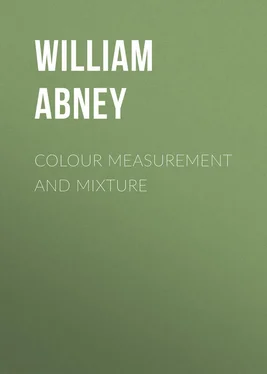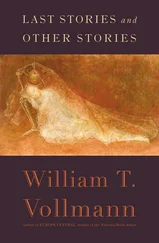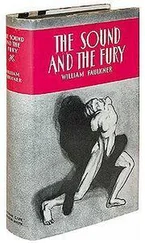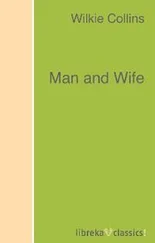William Abney - Colour Measurement and Mixture
Здесь есть возможность читать онлайн «William Abney - Colour Measurement and Mixture» — ознакомительный отрывок электронной книги совершенно бесплатно, а после прочтения отрывка купить полную версию. В некоторых случаях можно слушать аудио, скачать через торрент в формате fb2 и присутствует краткое содержание. Жанр: foreign_antique, foreign_prose, на английском языке. Описание произведения, (предисловие) а так же отзывы посетителей доступны на портале библиотеки ЛибКат.
- Название:Colour Measurement and Mixture
- Автор:
- Жанр:
- Год:неизвестен
- ISBN:нет данных
- Рейтинг книги:3 / 5. Голосов: 1
-
Избранное:Добавить в избранное
- Отзывы:
-
Ваша оценка:
- 60
- 1
- 2
- 3
- 4
- 5
Colour Measurement and Mixture: краткое содержание, описание и аннотация
Предлагаем к чтению аннотацию, описание, краткое содержание или предисловие (зависит от того, что написал сам автор книги «Colour Measurement and Mixture»). Если вы не нашли необходимую информацию о книге — напишите в комментариях, мы постараемся отыскать её.
Colour Measurement and Mixture — читать онлайн ознакомительный отрывок
Ниже представлен текст книги, разбитый по страницам. Система сохранения места последней прочитанной страницы, позволяет с удобством читать онлайн бесплатно книгу «Colour Measurement and Mixture», без необходимости каждый раз заново искать на чём Вы остановились. Поставьте закладку, и сможете в любой момент перейти на страницу, на которой закончили чтение.
Интервал:
Закладка:
Having thus explained the main part of the apparatus with which we shall work, we can go on and show how monochromatic light of any degree of purity can be produced on the screen. If the slit in the cardboard slide D be passed through the spectrum when it has been focused on the focusing-screen, only one small strip of practically monochromatic light will reach the screen, and instead of the white patch on the screen we shall have a succession of coloured patches, the colour varying according to the position the slit occupies in the spectrum. It should be noted that the purity of the colour depends on two things – the narrowness of the slit S₁ of the collimator, and of the slit S₂ in the card. If two slits be cut in the card D, we shall have two coloured patches overlapping one another, and if the reflected beam falls on the same space we shall have a mixture of coloured light with white light, and either the coloured light or the white light can be reduced in brightness by the introduction of the rotating sectors. If the rod be introduced in the path of the rays we shall have two shadows cast, one illuminated with coloured light, monochromatic or compound, and the other with white light, and these can be placed side by side, and surrounded by the black mask as before described.

Fig. 8. – Spectrum of Sodium Lithium and Carbon.
There is one other part of the apparatus which may be mentioned, and that is the indicator, which tells us what part of the spectrum is passing through the slit. Just outside the camera, and in a line with the focusing-screen, is a clip carrying a vertical needle. A small beam of light passes outside the prism P₁; this is caught by a mirror attached to the side of the apparatus, and is reflected so as to cast a shadow of the needle on to the back of the card D, on which a carefully divided scale of twentieths of an inch is drawn. To fix the position of the slit the poles of the electric light are brushed over with a solution of the carbonates of sodium and lithium in hydrochloric acid, and the image of the arc is thrown on the slit. This gets rid of the continuous spectrum, and only the bright lines due to the incandescent vapours appear on the focusing-screen (Fig. 8). Amongst other lines we have the red and blue lines due to the vapour of lithium; the orange, yellow (D), and green lines of sodium, together with the violet lines of calcium (these last due to the impurities of the carbons forming the poles). These lines are caused successively to fall on the centre of the slit by moving the card D, which for the nonce is covered with a piece of ground glass, and the position of the shadow of the needle-point on the scale is registered for each. A further check can be made by taking a photograph of these lines, or of the solar spectrum, and having fixed accurately on the scale any one of these lines already named, the position of the others on the scale may be ascertained by measurement from the photograph. Now the wave-lengths of these bright lines have been most accurately ascertained, in fact as accurately as the dark lines in the solar spectrum. Thus the scale on the card is a means of localizing the colour passing through the slit or slits. Should more than one slit be used in the spectrum the positions of each can be determined in exactly the same way. The most tedious part of the whole experimental arrangement with this apparatus is what may be called the scaling of the spectrum.
A fairly large spectrum may be formed upon the screen without altering any arrangement of the apparatus, when it has been adjusted to form colour patches. If a lens L₆ (see Fig. 6) of short focus be placed in front of L₄ (the big combining lens), an enlarged spectrum will be thrown upon the screen F, and if slits be placed in the spectrum the images of their apertures are formed by the respective coloured rays passing through them, so that the colours which are combined in the patch can be immediately seen.
CHAPTER V
Absorption of the Spectrum – Analysis of Colour – Vibrations of Rays – Absorption by Pigments – Phosphorescence – Interference.
We must now briefly consider what is the origin, or at all events the cause, of the colour which we see in objects. It is not proposed to enter into this by any means minutely, but only sufficiently to enable us to understand the subject which is to be brought before you. What for instance is the cause of the colour of this green solution of chlorophyll, which is an extract of cabbage leaves? If we place it in the front of the spectrum apparatus and throw the spectrum on the screen, we find that while there is a certain amount of blue transmitted, the green is strong, and there are red bands left, but a good deal of the spectrum is totally absorbed. Forming a colour patch of this absorption spectrum on the screen, we see that it is the same colour as the chlorophyll solution, and of this we can judge more accurately by using the reflected beam, and placing the rod in position to cast shadows. (The light of the reflected beam is that of the light entering the slit.) The colour then of the chlorophyll is due to the absence of certain colours from the spectrum of white light. When white light passes through it, the material absorbs, or filters out, some of the coloured rays, and allows others to pass more or less unaffected, and it is the re-combination of these last which makes up the colour of the chlorophyll. We have a green dye which to the eye is very similar in colour to chlorophyll, but putting a solution of it in front of the spectrum, we see that it cuts off different rays to the latter. It would be quite possible to mistake one green for the other, but directly we analyze the white light which has filtered through each by means of the spectrum, we at once see that they differ. Hence the spectrum enables the eye to discriminate by analysis what it would otherwise be unable to do. Any coloured solution or transparent body may be analyzed in the same way, and, as we shall see subsequently, the intensity of every ray after passing through it can be accurately compared with the original incident light. There are some cases, indeed the majority of cases, in which the colour transmitted through a small thickness of the material is different to that transmitted through a greater thickness. For instance, a weak solution of litmus in water is blue when a thin layer is examined, and red when it is a thicker or more concentrated layer. Bichromate of potash is more ruddy as the thickness increases. This can be readily understood by a reference to the law of absorption. Suppose we have a thin layer of a liquid which gives a purple colour when two simple colours, red and blue, pass through it, and that this thin layer cuts off one-quarter of the red and one-half of the blue incident on it, another layer of equal thickness will cut off another quarter of the three-quarters of red passing through the first layer, and half of the one-half left of the blue; we shall thus have nine-sixteenths of the red passing and only a quarter of the blue. With a third layer we shall have twenty-seven sixty-fourths of red and only one-eighth of blue left, showing that as the thickness of the liquid is increased the blue rapidly disappears, leaving the red the dominant colour. Now what is true of two simple colours is equally true of any number of them, where the rates of absorption differ from one another, and what is true for a solution is true for a transparent solid. In some opaque bodies, such as rocks, the reflected colour often differs slightly from that of the same when they are cut into thin and polished slices, through which the light can pass. The reason is that when opaque, light penetrates to a very small distance through the surface, and is reflected back, whilst in these layers the colour has to struggle through more coloured matter, and emerges of a different hue.
Читать дальшеИнтервал:
Закладка:
Похожие книги на «Colour Measurement and Mixture»
Представляем Вашему вниманию похожие книги на «Colour Measurement and Mixture» списком для выбора. Мы отобрали схожую по названию и смыслу литературу в надежде предоставить читателям больше вариантов отыскать новые, интересные, ещё непрочитанные произведения.
Обсуждение, отзывы о книге «Colour Measurement and Mixture» и просто собственные мнения читателей. Оставьте ваши комментарии, напишите, что Вы думаете о произведении, его смысле или главных героях. Укажите что конкретно понравилось, а что нет, и почему Вы так считаете.












